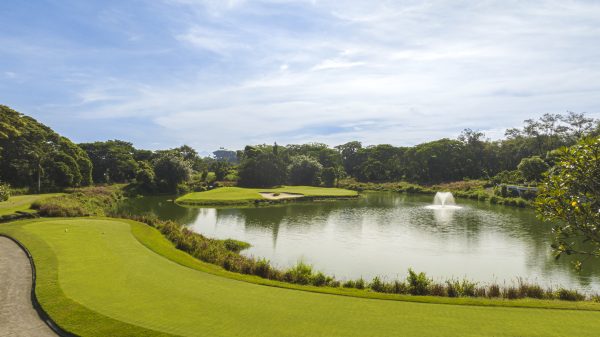 In an earlier posting about living in Thailand so that you can golf here year round, I referred briefly to the pro’s and con’s of buying golf course property. Nobody loves their golf more than me but, personally speaking, the last place that I would want to live is on a Thailand golf course – and that goes double for my wife.
In an earlier posting about living in Thailand so that you can golf here year round, I referred briefly to the pro’s and con’s of buying golf course property. Nobody loves their golf more than me but, personally speaking, the last place that I would want to live is on a Thailand golf course – and that goes double for my wife.
OK, you have easy access to golf whenever you want; particularly if a golf membership is included in the golf course real estate. Some Thailand golf courses have a good range of other facilities such as restaurants, massage, gymnasium, tennis courts, driving range and swimming pool. Also you can have the quiet of the often beautiful setting of a Thailand golf course far away from urban development. Buying a golf housing estate creates an instant social network of friends and you will never be short of a neighbor in search of a round. Golf properties also offer good rental potential.
But, consider the practicalities too. If your wife does not play golf, what will she do with herself whilst you are out gracing the fairways? And after you have eaten in the club restaurant for seven nights in a row, or you have simply run out of beer, you may well have a 30-minutes-plus ride to the nearest restaurant or seven eleven – indeed, at some Thai golf housing estates like Lakewood or Summit Windmill in Bangkok, it can take 20 minutes just to reach the exit! For me, it is just too quiet.
Nevertheless, each to his own, and if your dream is a luxury villa on a Thai golf development, there is no shortage of projects around Thailand. In the far south, typical would be the properties on the Loch Palm Golf Club in Phuket. In Bangkok you could buy land and build your golf villa at a number of golf courses including Summit Windmill and Lakewood. As with all property purchases, thorough research and groundwork will pay dividends. Don’t just buy because you like the course, you will spend more time in your villa than you will playing golf. Buy a property that is close to good transport links and other facilities, such as shopping centers and restaurants. Go for quality – buy at the best development you can afford.
For capital appreciation, focus on new areas that are gaining a reputation among experts – perhaps Chiang Mai or Hua Hin? For rental income, check what playing rights your guests will be entitled to and how much it will cost them. Examine all the expenses thoroughly: building – and more importantly, maintaining – a good golf course is expensive. Who will pay? Don’t buy a plot too close to the fairway – it might be me out there on the fairway and you don’t want golf balls flying into your bedroom. Finally, budget realistically as rental returns and running costs should be planned conservatively. Take professional advice on such matters as taxation, mortgages and, the laws on foreigners owning Thai property.
I would be very pleased to hear from anyone who has bought a property on a Thai golf course, or is planning to do so.
This post has already been read 318 times!








2 Responses
Hi Mark,
I loved the comment about not buying near the fairway. Recently I played with some friends at a prestigious course near Brisbane, Australia. One of the party hits the ball a long way. When we use driver (I average 250 metres) he uses 3 wood or less. At this particularly long par 4, he decides to go with driver. The resulting accentuated draw (hook) passed through a line of gum trees (5 deep) with a resulting crash and tinkleing of glass (every Australian golfer will know how gum leaves affect the flight of a golf ball, they had no effect). This was from a house under construction about 100 metres down the fairway. We were in awe that heis ball made it through the trees and the future owner has no idea what they are in for when they purchase their “dream” beside the golf course.
Hello,
Thanks for all the information on this fabulous golf villa. This is a place for the riches. I would love to experience it some day.